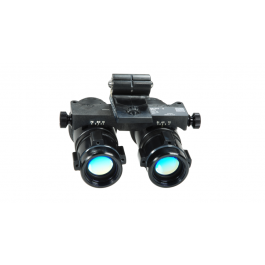Also go price out NGV instrument lighting kit$
Maybe in a experimental you might be able to save on the instrument lights after some research. Also these kits aren’t really seen in many GA aircraft, so experimental aircraft might be the best choice if you want to GA under NVGs
But give it a shot with a pilot buddy, ideally also a instructor, who’s not under NVGs
With proper training it’s safe, lots of non mil pilots got jobs with medevac companies in the US and do just fine with the NGVs
Ҥ61.31
Additional training required for night vision goggle operations.
(1) Except as provided under paragraph (k)(3) of this section, a person may act as pilot in command of an aircraft using night visiongoggles only if that person receives and logs ground training from an authorized instructor and obtains a logbook or training record endorsement from an authorized instructor who certifies the person completed the ground training. The ground training must include the following subjects:
(i) Applicable portions of this chapter that relate to night vision goggle limitations and flight operations;
(ii) Aeromedical factors related to the use of night vision goggles, including how to protect night vision, how the eyes adapt to night, self-imposed stresses that affect night vision, effects of lighting on night vision, cues used to estimate distance and depth perception at night, and visual illusions;
(iii) Normal, abnormal, and emergency operations of night vision goggle equipment;
(iv) Night vision goggle performance and scene interpretation; and
(v) Night vision goggle operation flight planning, including night terrain interpretation and factors affecting terrain interpretation.
(2) Except as provided under paragraph (k)(3) of this section, a person may act as pilot in command of an aircraft using night visiongoggles only if that person receives and logs flight training from an authorized instructor and obtains a logbook or training record endorsement from an authorized instructor who found the person proficient in the use of night vision goggles. The flight training must include the following tasks:
(i) Preflight and use of internal and external aircraft lighting systems for night visiongoggle operations;
(ii) Preflight preparation of night visiongoggles for night vision goggle operations;
(iii) Proper piloting techniques when using night vision goggles during the takeoff, climb, enroute, descent, and landing phases of flight; and
(iv) Normal, abnormal, and emergency flight operations using night vision goggles.
(3) The requirements under paragraphs (k)(1) and (2) of this section do not apply if a person can document satisfactory completion of any of the following pilot proficiency checks using night visiongoggles in an aircraft:
(i) A pilot proficiency check on night visiongoggle operations conducted by the U.S. Armed Forces.
(ii) A pilot proficiency check on night visiongoggle operations under part 135 of this chapter conducted by an Examiner or Check Airman.
(iii) A pilot proficiency check on night visiongoggle operations conducted by a night vision goggle manufacturer or authorized instructor, when the pilot—
(A) Is employed by a Federal, State, county, or municipal law enforcement agency; and
(B) Has logged at least 20 hours as pilot in command in night vision goggle operations.” 
